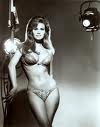
'Iconic' as rationale for fair use of someone else's (Martin Elliott's) copyright image — from wikipedia (click for link)
We’ve discussed ‘fair dealing’ and ‘fair use’ of other people’s intellectual property previously.
I stumbled across THIS useful explanation on wikipedia following a link from Jason Kottke on reproductions of classic photographs in lego and found it interesting enough — the copyright aspect — to quote in full here.
Copyright is owned by Martin Elliott.
Fair use rationale for Tennis Girl
The picture is being uploaded in a scaled down low resolution version under fair rationale to illustrate an article of significant cultural and historical importance: namely this is alleged to be the biggest selling poster of all time and is an iconic image for the 1970s in the UK and beyond.
This image is iconic. No meaningful discussion about the subject can be had without reference to the image. The image was/is extremely widespread with over 2 million posters being distributed (see article for ref).
So to be clear the rationale:
1. Significant cultural and historical importance
2. The image is iconic
3. The image has widespread use
4. No meaningful discussion about the subject can be had without reference to the image
5. The use of this image does not limit or impinge on the image’s commercial use: namely sale as a full size poster.Licensing
This image is of a poster, and the copyright for it is most likely owned by either the publisher or the creator of the work depicted. It is believed that the use of scaled-down, low-resolution images of posters to provide critical commentary on the film, event, etc. in question or of the poster itself, not solely for illustration on the English-language Wikipedia, hosted on servers in the United States by the non-profit Wikimedia Foundation, qualifies as fair use under United States copyright law.
Point #5 is the kicker for me: “The use … does not limit or impinge on the image’s commercial use…” … and all I’d add is: and the original source is properly attributed or referenced where possible.
What does it say about our ‘culture’ that Martin Elliott’s Tennis Girl is “alleged to be the biggest selling poster of all time and is an iconic image for the 1970s”? It is a playful image. Cheeky. (Ba-da-boom!)
I thought that ‘biggest-selling’ accolade went to the Farrah Fawcett poster at left (click thumbnail for a larger image) — which, when you think about it, I guess, has a similar ‘theme’… and truly was ‘iconic’ — if that means on A LOT of teenage boys’ bedroom walls.  Ahem.
Ahem.
I seem to remember there was a black and white poster of Raquel Welch too … that was pretty ‘iconic’ too.
Yup … Definitely. No question about it.




From the Birmingham Post July 2007:
http://www.birminghampost.net/news/west-midlands-news/2007/07/13/tennis-poster-girl-and-her-classic-pose-65233-19451134/
Good on her.
What I find amazing about this “iconic” photo is that I have never before seen it until now. I’m not sure what this says about me; perhaps a cloistered upbringing?
I like it though!
Never seen it before!?!? {Splutter, hack, cough!}
Look here, whatever your name is: Wikipedia says it is ‘iconic’! Wikipedia!
Surely to betsy, hell-in-a-handbasket, you don’t doubt Wikipedia? http://www.thepaepae.com/it-must-be-true-i-saw-it-on-the-internet/1083/
Seriously, I remember it well. And those other two. (sigh) – P
Sorry, but I was the odd kid out in the 1970’s (possibly my worst decade). No good at sports and really bad at talking to pretty girls. I spent most of my teenage years hiding in the library – come to think of it – that was how I managed to avoid sports and pretty girls. Perhaps, there is my problem!
I’m not sure that posters of scantily-clad women on our bedroom walls assisted anyone to communicate with the opposite sex. No worries. We were all the odd kid out. That’s universally how teenage years feel, I think. Cheers, P
[…] earlier comments — quoting Wikipedia — “The use … does not limit or impinge on the image’s commercial use…” apply. It’s not enough to see and be jealous of the income the founders of YouTube or the […]